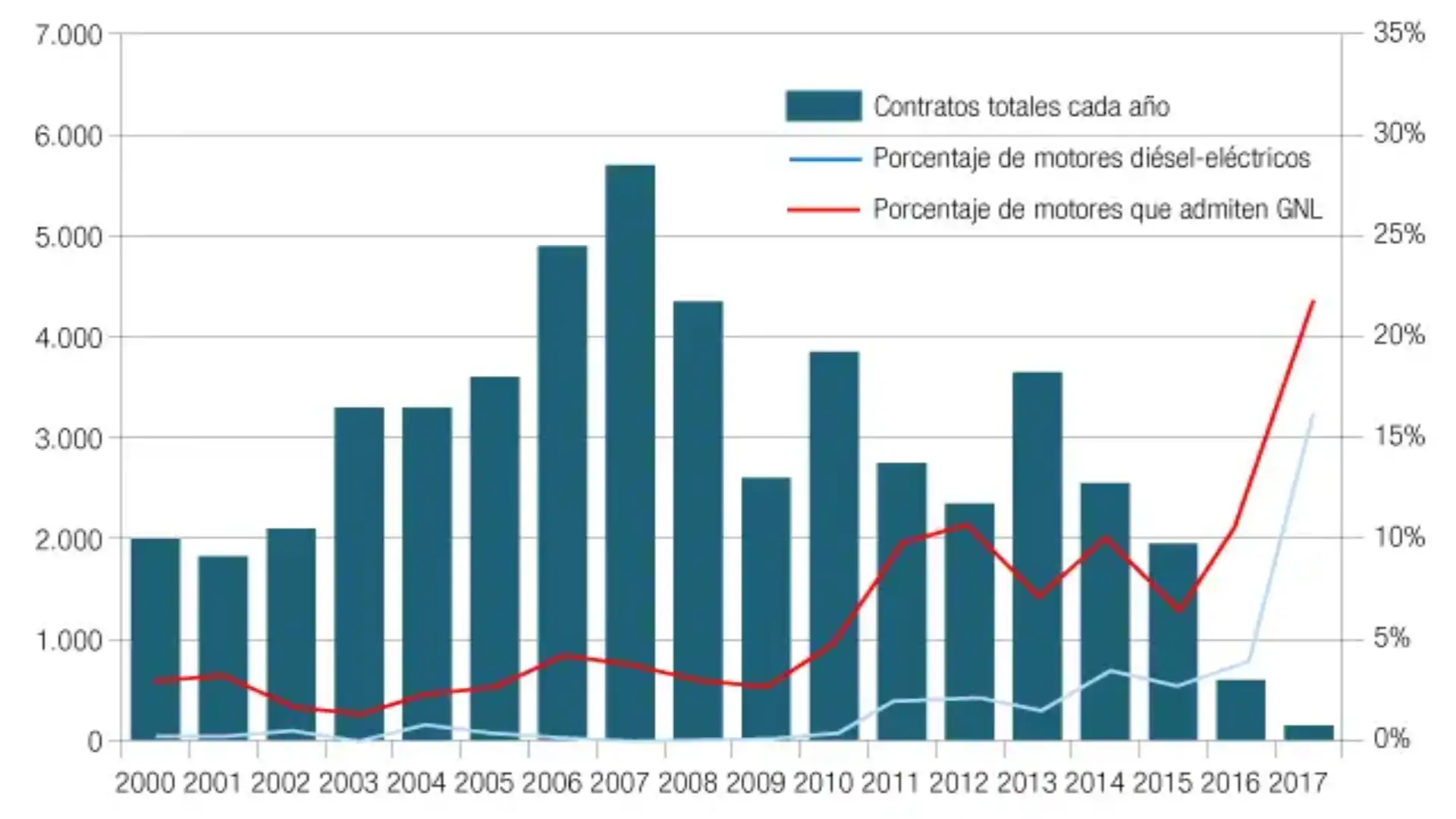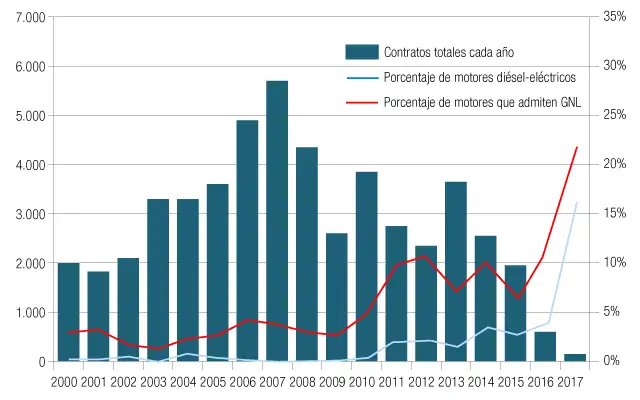
Dietary propulsions - electric and natural gas the two systems in rise
Dietary propulsions - electric and natural gas the two systems in rise

Percentage of ships with diesel- electric propulsion and liquefied natural gas with respect to contracts (Clarksons Research)
According to the Spanish Shipping Association (ANAVE), the introduction of new environmental standards is leading the maritime transport sector to find ways to reduce its emissions. In a recently published article Clarksons Research presents the different options in propulsion types and fuel that are applying the trends. 96% of the merchant ships in service are powered by mechanical systems in which an oil fuel feeds one or more engines (usually 2 or 4-stroke diesel) connected to one or more propellers. The majority of the remaining 4% are of die- electric propulsion, in which the power generated by the main engine becomes electricity that moves electric engines that in turn activate the propellers. This has the advantage of allowing the installation of azimutal propellers (or pods) that give the ship great maneuverability.
The use of these systems is widespread in sectors such as offshore support vessels, tugs and cruises, where maneuverability, change in power demand and engine noise are priority factors. Optimizing engine power, these die- electric systems can reduce fuel consumption and emissions. For larger merchant ships, where this demand for power is generally higher and more stable, conventional mechanical systems remain more efficient and cost-effective. The graph shows that, in a context in which new construction in the larger ships sector is declining, the energy propulsion sector has increased its market share and represents 22% of the new construction contracts registered this year.
The next step for electrical propulsion systems can be the most widespread adoption of batteries in the main systems. There are currently 22 vessels in service and 14 in portfolio using batteries, mostly combined with conventional diesel or dual fuel engines. In addition to reducing emissions, these systems can improve efficiency, optimizing engine power and transferring excess energy to or from batteries as needed. In the case of small ferries, intended for very short routes (such as the crossing of a port or a fjord) these electrical propulsion systems are perfectly viable and are already being used.
On the other hand, the benefits of liquefied natural gas (LNG) are already well known as a cleaner fuel, capable of reducing ship emissions to meet the new standards. In the world fleet there are currently about 550 merchant vessels in the fleet capable of using LNG fuel. Of these, 351 are LNG transport meteors, which can use evaporated gas as fuel for turbines, electric diesel propellants or dual fuel engines. In other sectors, LNG as a fuel has taken longer to gain market share, but thanks to new and more demanding emission standards, when the ship's project and supply availability allow it, it is becoming more popular. Of the 130 new construction contracts registered in 2017, 21 are for ships capable of using LNG as fuel.
More efficient energy systems and cleaner fuels are two examples of how the maritime sector is responding to the challenges of new environmental standards. Along with other developments in the ship project and its operation, such as ballast water management or sustainable recycling, maritime transport is moving towards an even more efficient and cleaner future.
© 2024 Nautica Digital Europe - www.nauticadigital.eu











